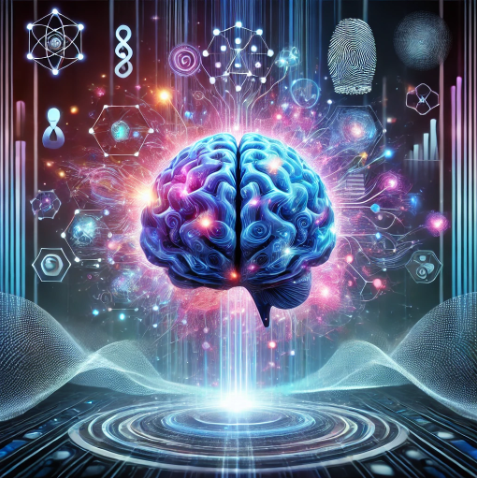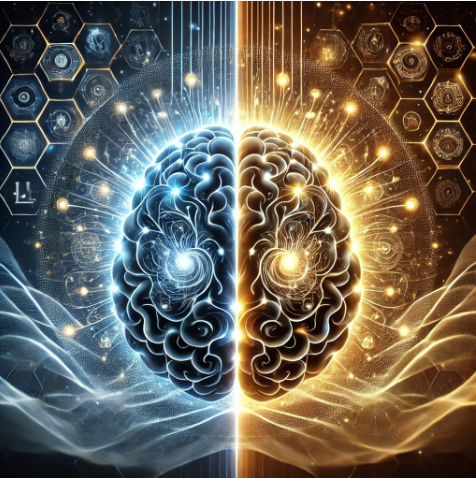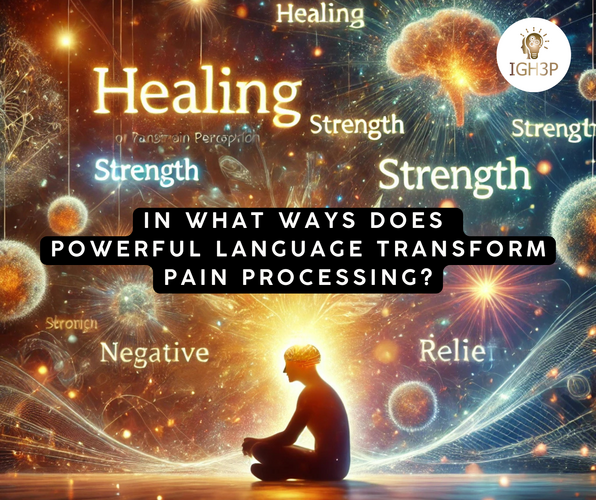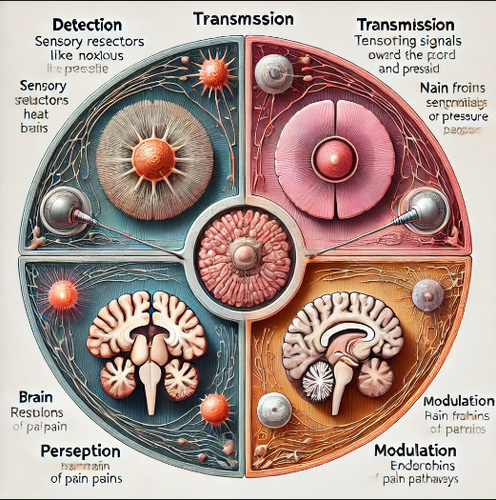Blog
subconscious mind
Mastering Emotional Intelligence with Neuro-Linguistic Psychology: A Path to Better Relationships
Mastering Emotional Intelligence with Neuro-Linguistic Psychology: A Path to Better Relationships
In an era when emotional intelligence (EI) is increasingly recognised as a crucial factor in personal and professional success, integrating Neuro-Linguistic Psychology (NLP) can provide a unique edge. With its powerful techniques, NLP complements the principles of EI, helping individuals build stronger, more meaningful relationships.
Understanding Emotional Intelligence
Emotional intelligence…
Opening the Control of Neuro-Linguistic Brain Research: Changing Mindsets and Behaviors for Success
In today’s fast-paced world, individual advancement and successful communication are fundamental for accomplishing victory in different areas of life. One effective instrument that has gained noticeable quality in this field is Neuro-Linguistic Psychology (NLP).
By understanding and applying NLP methods, people can change the way their brains are wired, improve their communication skills, and set themselves on a path toward accomplishing their life goals.
What is Neuro-Linguistic Brain Resear…
In What Ways Does Powerful Language Transform Pain Processing?
In What Ways Does Powerful Language Transform Pain Processing?
Language plays a complex and important role in how individuals experience and process pain.
Research has shown that the words and metaphors we use to describe pain can influence our cognitive, emotional, and physiological responses to painful stimuli, as well as our ability to cope with and manage chronic pain conditions. 🗣️🧠
Here are some key ways in which language affects pain processing:
Attentional focus and interpretation…
Is NLP A Genuine Breakthrough Or A Better Pseudoscience?
The question of whether Neuro-Linguistic Programming (NLP) is a pseudoscience or has some truth to it is a complex and controversial one that has been debated in scientific and professional circles for decades. While NLP has become more well-known in sectors like personal development, business, and therapy, many researchers and skeptics have questioned its scientific validity and effectiveness.
Here are some key considerations regarding the scientific status of NLP :
Lack of empirical evi…
Is Pain-Reprocessing Therapy Actually Really The Same As CBT? Discover The Eye-Opening Differences And Powerful Benefits.
Pain Reprocessing Therapy (PRT) and Cognitive-Behavioural Therapy (CBT) are related but distinct approaches to treating chronic pain and other psychological conditions. While PRT incorporates some elements of CBT, it also differs from CBT in several important ways. Understanding the similarities and differences between these two approaches can help individuals and healthcare providers make informed decisions about which treatment may be most appropriate and effective for their specific needs and…
Discover The 4 Beautiful Stages Of Pain Processing: Unlock The Secrets To Transform Your Life And Heart
Pain processing is a complex and dynamic phenomenon that involves multiple stages and components, from the initial perception of a noxious stimulus to the final behavioural and physiological responses to that stimulus. While there is no universally accepted model of pain processing, many researchers and clinicians have proposed various frameworks and stages to describe the key steps and processes involved in the experience and modulation of pain. 🧠🔍
One common framework for understanding pain…
#7: Spotlight: Decoding the Emotional Alchemy of the Mind
  |
Decoding the Emotional Alchemy of the Mind
The complex interplay between our feelings and brain chemistry is one of the most fascinating uncharted territories in the dynamic field of neuroscience. Dr Terry, the Synaptic Trainer, sheds light on emotional alchemy, illuminating how neurotransmitters impact our emotional experiences.
NEUROTRANSMITTERS
Neurotransmitters are the chemical messengers that facilitate communication between neurons in the brain. …
Can Self-Hypnosis Aid in Interdimensional Communication?
Self-hypnosis has long been acknowledged as a potent method for improving oneself and undergoing personal change. It enables people to harness the power of their subconscious mind to get rid of limiting beliefs, improve wellbeing, and realise their goals.
How to Communicate with the Subconscious Mind
The subconscious mind, which is said to be linked to a wider collective consciousness or universal energy, can be reached directly through self-hypnosis. People can overcome conscious restriction…
Blog
subconscious mind
Mastering Emotional Intelligence with Neuro-Linguistic Psychology: A Path to Better Relationships
Mastering Emotional Intelligence with Neuro-Linguistic Psychology: A Path to Better Relationships
In an era when emotional intelligence (EI) is increasingly recognised as a crucial factor in personal and professional success, integrating Neuro-Linguistic Psychology (NLP) can provide a unique edge. With its powerful techniques, NLP complements the principles of EI, helping individuals build stronger, more meaningful relationships.
Understanding Emotional Intelligence
Emotional intelligence…
Opening the Control of Neuro-Linguistic Brain Research: Changing Mindsets and Behaviors for Success
In today’s fast-paced world, individual advancement and successful communication are fundamental for accomplishing victory in different areas of life. One effective instrument that has gained noticeable quality in this field is Neuro-Linguistic Psychology (NLP).
By understanding and applying NLP methods, people can change the way their brains are wired, improve their communication skills, and set themselves on a path toward accomplishing their life goals.
What is Neuro-Linguistic Brain Resear…
In What Ways Does Powerful Language Transform Pain Processing?
In What Ways Does Powerful Language Transform Pain Processing?
Language plays a complex and important role in how individuals experience and process pain.
Research has shown that the words and metaphors we use to describe pain can influence our cognitive, emotional, and physiological responses to painful stimuli, as well as our ability to cope with and manage chronic pain conditions. 🗣️🧠
Here are some key ways in which language affects pain processing:
Attentional focus and interpretation…
Is NLP A Genuine Breakthrough Or A Better Pseudoscience?
The question of whether Neuro-Linguistic Programming (NLP) is a pseudoscience or has some truth to it is a complex and controversial one that has been debated in scientific and professional circles for decades. While NLP has become more well-known in sectors like personal development, business, and therapy, many researchers and skeptics have questioned its scientific validity and effectiveness.
Here are some key considerations regarding the scientific status of NLP :
Lack of empirical evi…
Is Pain-Reprocessing Therapy Actually Really The Same As CBT? Discover The Eye-Opening Differences And Powerful Benefits.
Pain Reprocessing Therapy (PRT) and Cognitive-Behavioural Therapy (CBT) are related but distinct approaches to treating chronic pain and other psychological conditions. While PRT incorporates some elements of CBT, it also differs from CBT in several important ways. Understanding the similarities and differences between these two approaches can help individuals and healthcare providers make informed decisions about which treatment may be most appropriate and effective for their specific needs and…
Discover The 4 Beautiful Stages Of Pain Processing: Unlock The Secrets To Transform Your Life And Heart
Pain processing is a complex and dynamic phenomenon that involves multiple stages and components, from the initial perception of a noxious stimulus to the final behavioural and physiological responses to that stimulus. While there is no universally accepted model of pain processing, many researchers and clinicians have proposed various frameworks and stages to describe the key steps and processes involved in the experience and modulation of pain. 🧠🔍
One common framework for understanding pain…
#7: Spotlight: Decoding the Emotional Alchemy of the Mind
  |
Decoding the Emotional Alchemy of the Mind
The complex interplay between our feelings and brain chemistry is one of the most fascinating uncharted territories in the dynamic field of neuroscience. Dr Terry, the Synaptic Trainer, sheds light on emotional alchemy, illuminating how neurotransmitters impact our emotional experiences.
NEUROTRANSMITTERS
Neurotransmitters are the chemical messengers that facilitate communication between neurons in the brain. …
Can Self-Hypnosis Aid in Interdimensional Communication?
Self-hypnosis has long been acknowledged as a potent method for improving oneself and undergoing personal change. It enables people to harness the power of their subconscious mind to get rid of limiting beliefs, improve wellbeing, and realise their goals.
How to Communicate with the Subconscious Mind
The subconscious mind, which is said to be linked to a wider collective consciousness or universal energy, can be reached directly through self-hypnosis. People can overcome conscious restriction…







